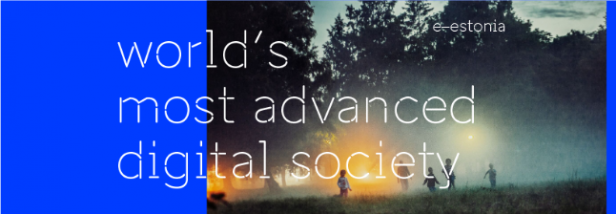e-Estonia is currently the most ambitious project in technology-assisted policymaking in the world. It includes anybody involved with government and it has changed the daily life of citizens. Almost all public services are involved: Legislation, voting, education, justice, health care, banking, taxes, and police. These are digitally linked to each other via one platform. Only for marriages, divorces and real-estate transactions, a visit to the town hall is mandatory.
The country’s ICT-infrastructure has been developed by government, along with a few Estonian companies. The state has been the driving force behind this project and has attracted the best specialists of the country. Below, I mention some of the features of the project.
Infrastructure
Estonia has developed an ICT-infrastructure – the Government Cloud - that all government agencies and most companies use. This makes possible almost perfect interoperability in accordance with the highest level of IT Security Standards (ISKE).
To be protected against external cyberattacks, such as in 2007, there is a full back-up. This is in a datacenter in Luxemburg, which has an internationally accepted status as ‘embassy’. It works under Estonian state control and can take over the most critical services seamlessly.
Data protection
Data is not stored centrally. Instead, the government data platform, X-Road, connects individual servers via end-to-end encrypted pathways. In the Estonian system any individual owns all information that is recorded about him or herand any use that is made of it is recorded.
This video explains how X-road works.
The backbone of Estonia’s digital security is a blockchain technology called KSI. It is designed in Estonia and applied worldwide today. It guarantees complete privacy and excludes anyone from manipulating the data. KSI blockchain technology documents all actions in the system and protects information without access to the information itself.
The technology has been developed together with Guardtime, a company founded in 2007 in Estonia, that has exporting the system globally and therefore has offices around the world.
The Dutch Judicial Information Service (Justitiële Informatiedienst) has chosen Guardtime’s KSI Blockchain technology for integrity assurance of new e-services. The blockchain integration ensures transparency, verifiability and security of the information that is processed in government systems.
Voting
Whereas most technology advanced countries still let people vote with pen and paper or use primitive voting machines, from 2007 Estonia applies e-voting for parliament election and elections at municipal level.
With e-Voting, voters can cast their vote from any computer with an internet connection anywhere in the world: During a designated period, voters log in to the system with an ID-card or Mobile-ID, and cast a ballot. To ensure anonymity, the voter’s identity is removed from the ballot before it reaches the National Electoral Commission, which counts the votes. Every system of remote voting, including traditional ballot papers sent by post, risks buying or enforcing someone’s vote. Estonia’s solution is the possibility to change his or her vote later with only the last vote counting.
Streamlining decision-making
Governmental bodies at all levels use a paperless information system – e-cabinet – that has streamlined decision making and reduced the time spent on meetings with 80%. Well before the start of a meeting, participants view the agenda items and determine their opinion. If they have objections or want to discuss the subject, they click on a box. The opinions of all participants are therefore known in advance. If there are no objections, decisions are taken without debate.
This video below demonstrates the operation of e-cabinet.
Residency program
Like many other European states, the population of Estonia is shrinking. Increasing the number of babies is complicated, so a digital residency program was launched in 2014, in style with the Estonian e-government project. Any foreigner can become Estonian resident without ever visiting the country and can participate in Estonian services, such as banking. Estonia has liberal rules for technological research and the lowest corporate tax rates in the European Union.
About 28.000 people have applied for an e-residency, including many owners of small businesses from the United Kingdom who want to be based in the EU.
The footing of e-Estonia is – according to the government – to facilitate and improve the life of citizens and to make the government more efficient. This goal certainly has been achieved. The total amount of savings is calculated at 2% of GNP.
Technology can play a role in improving the quality of the formal organization, decision making, the provision of services and the relationship with all stakeholders. In this context, concepts such as e-government (digital government) and e-governance are often used. Estonia offers a great example of e-government. For e-governance - the mutual communication between municipal authorities and citizens using digital tools - we better take Spain as an example, as I will explain in a next post.
I will regularly share with you ‘snapshots’ of the challenge to bring social and ecological sustainable cities closer using technology - if helpful. These posts represent findings, updates, and supplements of my e-book Humane cities. Always humane. Smart if helpful. The English version of this book can be downloaded for free below.






Thanks for Sharing. Estonia is a role model for any e-Government practices around the world. They showed us that digital governance is a possibility rather than a vision or dream.